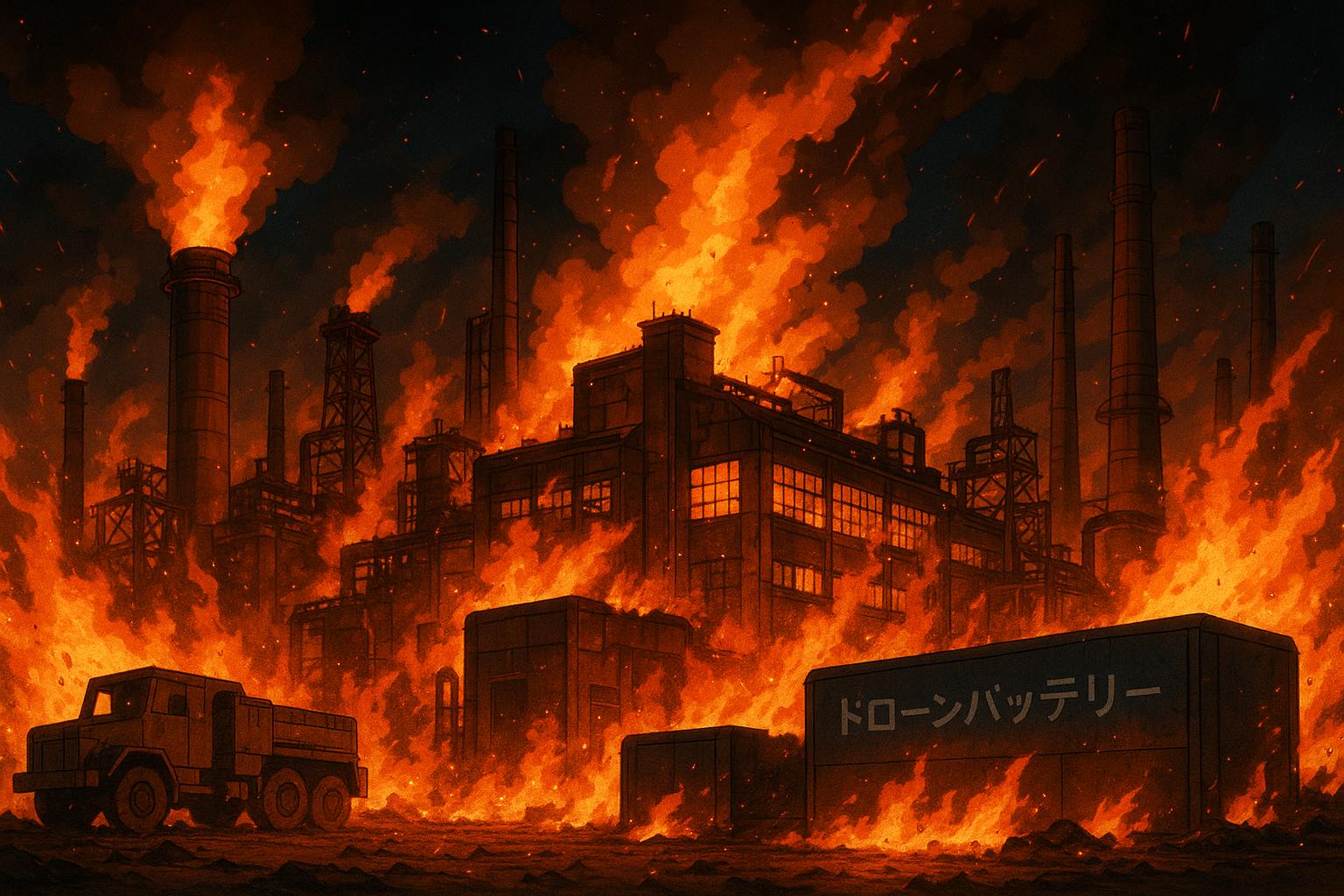As the war in Ukraine escalates, Russia finds itself grappling with profound economic repercussions, especially following targeted strikes on critical military-industrial facilities. Latest reports indicate that the Energiya plant in Yelets—a key supplier of batteries for drones and missiles—has sustained substantial damage from recent Ukrainian drone attacks. The fallout from this assault is staggering, with estimates suggesting that Russia is losing up to £487,300 a day due to the facility’s shutdown. This significant financial haemorrhage underscores the intensity of Ukraine's strategy to disrupt the operational capabilities of Russia’s military forces.
Kyrylo Shevchenko, a former head of Ukraine's National Bank, articulated the gravity of the situation, indicating that following the drone strikes, the Energiya plant—a facility deemed vital for the production of munitions like Iskander and Kinzhal missiles—now faces an uncertain future. Prior to the attack, the plant had recently secured a $12 million investment aimed at nearly doubling its output in 2024. However, recent events have left the factory engulfed in flames and its production capabilities severely curtailed, reflecting a broader pattern of Ukrainian efforts to dismantle Russian military infrastructure by targeting essential supply lines.
The economic impact extends beyond individual plant closures, as experts highlight an overarching trend of deterioration within Russia's economy. Torbjörn Becker, Director of the Stockholm Institute of Transition Economics, has noted the challenges faced by the Russian economy exacerbated by overwhelming defence spending, high inflation, and dwindling foreign investment—all attributable to ongoing Western sanctions following the invasion of Ukraine. While Russia has historically managed to buoy its economy through oil exports to nations such as India and China, the volatility of global oil markets poses increasing risks. Sanctions targeting the so-called “shadow fleet” of oil tankers have markedly reduced Russia's revenue streams, leading to fears that the country could exhaust its sovereign wealth fund within a year if prices remain low.
A recent report presented to EU finance ministers asserts that Russia’s economic statistics may be misleading. Official figures suggest a GDP growth of 4.3% in 2024 and 3.6% in 2023, yet experts warn these estimates may be inflated. With incentives for maintaining a veneer of economic stability, the reality reflects a budget deficit that is likely double what official data suggests, raising alarms that reliance on credit growth could precipitate a banking crisis. Valdis Dombrovskis, European Economic Commissioner, underlined the increasing fragility of Russia's economic environment, advocating for intensified international measures to limit its war-sustaining capabilities.
As the conflict drags on, the demands of sustaining military operations are placing additional pressures on the civilian economy, including potential tax increases and cuts to social services. Although the Russian economy may not be poised for immediate collapse, these strain factors could culminate in further hardship for ordinary citizens. With high inflation rates, COVID-19 recovery strains, and rising interest rates, the economic landscape is further complicated, raising the spectre of a repeat of historical economic miscalculations that previously plagued the Soviet Union.
In contrast, Ukraine remains resolute, with its sustained attacks on Russian infrastructure aimed at crippling the capabilities required to maintain military aggression. Reports indicate an overarching determination among Ukrainian forces to counteract Russian offensives. As winter approaches, both nations seem locked in a fierce struggle, pointing to an uncertain future amid ongoing geopolitical tensions.
Ultimately, the stakes are high; both militarily and economically, the future of Russia and Ukraine hinges on the outcomes of this protracted conflict. As Western nations observe and respond, the ramifications for global energy markets and local economies continue to unfold, heralding a pivotal moment in the region's contemporary history.
Reference Map:
Source: Noah Wire Services
